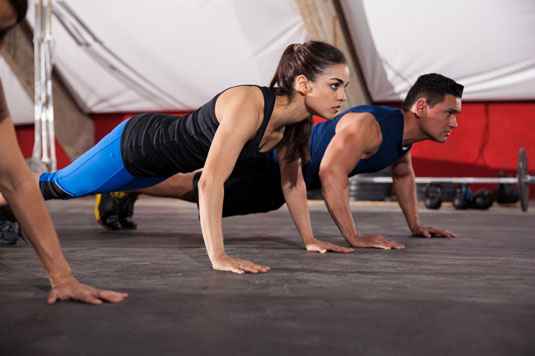
When it comes to choosing a fitness regimen, the debate between bodyweight exercises and traditional weightlifting has been ongoing. Both approaches offer unique benefits and considerations, catering to different fitness goals and preferences. In this comprehensive guide, which includes a list of calisthenics exercises, we’ll delve into the pros and cons of both bodyweight exercises and weightlifting, empowering you to make an informed decision that aligns with your fitness journey.
Table of Contents
The Power of Bodyweight Exercises
Pros:
- Accessible Anywhere: Bodyweight exercises require no special equipment, making them ideal for those who prefer to work out at home or on the go.
- Functional Strength: Bodyweight exercises mimic real-life movements, enhancing functional strength that translates into everyday activities.
- Balanced Muscle Development: Many bodyweight exercises engage multiple muscle groups, promoting balanced muscle development and reducing the risk of imbalances.
- Injury Prevention: By working within your body’s natural range of motion, bodyweight exercises can help prevent injuries caused by improper form or excessive weights.
- Versatility: A wide range of bodyweight exercises can be modified for all fitness levels, from beginners to advanced athletes.
Cons:
- Limited Load Progression: As your strength increases, progressively increasing resistance with body weight alone might become challenging.
- Skill Acquisition: Some advanced bodyweight movements, such as handstands or planches, require time and practice to master.
Unleashing the Potential of Weightlifting
Pros:
- Progressive Resistance: Weightlifting allows for precise load progression by adding weights incrementally, enabling consistent strength gains.
- Hypertrophy and Muscle Building: Weightlifting is particularly effective for muscle hypertrophy and building mass due to the higher resistance levels.
- Isolation of Muscle Groups: With weightlifting, you can target specific muscle groups and adjust exercises to emphasize particular areas.
- Efficiency: Weightlifting sessions can be time-efficient, as the focused nature of exercises allows for targeted muscle engagement.
Cons:
- Equipment Dependence: Weightlifting usually requires access to gym equipment, which might not be available to everyone.
- Risk of Injury: Incorrect form or lifting excessively heavy weights without proper guidance can lead to injuries.
- Learning Curve: Learning proper weightlifting techniques is essential to prevent injuries and achieve optimal results.

Finding Your Fitness Path: Which Is Right for You?
Bodyweight Exercises Are Ideal If:
- You prefer workouts that can be done anywhere without the need for equipment.
- You’re focused on functional strength and overall fitness.
- You’re a beginner or looking for low-impact exercises.
- You enjoy mastering new movements and challenging your coordination.
Weightlifting Is a Great Choice If:
- You’re aiming for muscle hypertrophy and targeted muscle development.
- You have access to gym equipment and are comfortable using it.
- You’re interested in gradually increasing resistance for progressive strength gains.
- You’re committed to learning proper techniques and forms to prevent injuries.
The Perfect Blend: Incorporating Both Approaches
Rather than viewing bodyweight exercises and weightlifting as competitors, consider integrating both into your fitness routine. This hybrid approach can offer the best of both worlds, combining the functional benefits of bodyweight exercises with the targeted muscle development of weightlifting. For instance, you can use bodyweight exercises as warm-ups or finishers to enhance flexibility and coordination while incorporating weightlifting to build muscle mass and increase strength.
Conclusion
The decision between bodyweight exercises and weightlifting ultimately depends on your goals, preferences, and circumstances. Bodyweight exercises excel in accessibility, functional strength, and versatility, while weightlifting shines in progressive resistance and muscle building. By understanding the pros and cons of each approach, you can tailor your fitness journey to meet your aspirations. Remember, there’s no one-size-fits-all answer; the key is finding the right balance that empowers you to achieve a healthier, stronger, and more resilient you.







